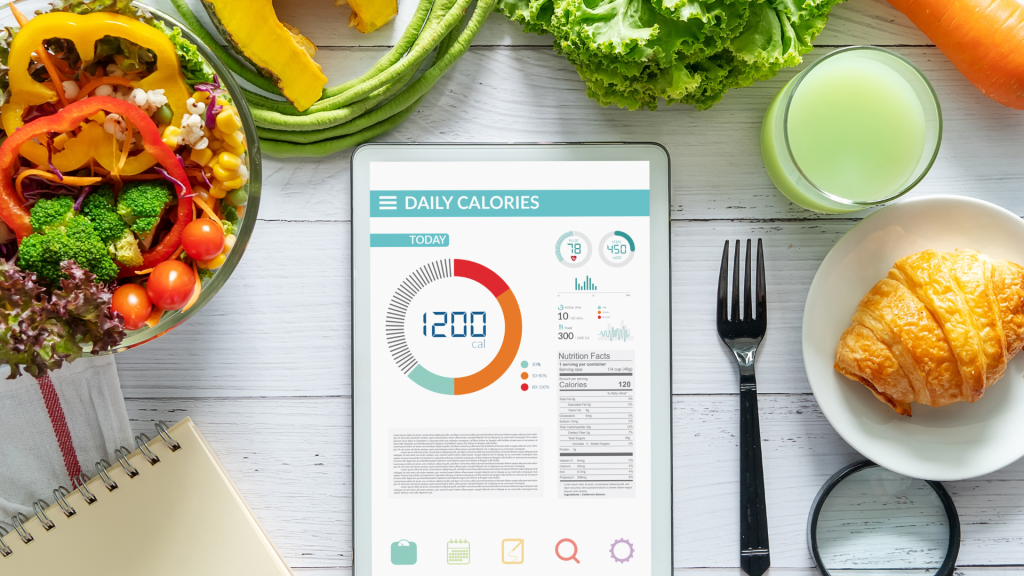Simple Guide to Counting Calories Daily For Healthy Eating
Have you ever been halfway through a delicious meal maybe a bowl of creamy pasta or a satisfying plate of swallow when a thought strikes you: Am I eating the right amount of calories? Or even better, Are these the right kind of calories? If you’ve ever paused mid-bite with those questions, you’re not alone. As health awareness continues to rise globally, more people are taking charge of their nutrition and lifestyle. Yet, tracking daily calorie intake still feels overwhelming to many. The good news? It doesn’t have to be. Calorie counting can be simple, sustainable, and even empowering if done the right way. In this guide, we’ll walk you through everything you need to know about counting calories from the basics to smart tools and sustainable strategies. Whether your goal is weight loss, muscle gain, or just eating smarter, mastering calorie tracking can put you back in control of your nutrition. So, if you’ve ever found food labels confusing or felt lost trying to track your meals, settle in this post will take you from calorie confusion to calorie confidence. What Are Calories and How Do They Affect Weight? Calories are units of energy your body needs to function from basic tasks like breathing and sleeping to more intense activities like walking or running. Every food and drink you consume contains calories, which fuel these essential processes. However, not all calories are created equal. Some foods, like cake or fried snacks, are calorie-dense with little nutritional value, while others such as lettuce, fruits, and lean proteins offer fewer calories but more nutrients. If you eat more calories than your body can burn, the excess is stored as fat, which leads to weight gain over time. On the other hand, eating fewer calories than your body uses forces it to tap into stored fat for energy, resulting in weight loss. Understanding how calories work is the first step in managing your nutrition and achieving your health goals. Top Benefits of Counting Calories for Better Health Understanding your daily calorie intake offers several powerful benefits that can help you live a healthier, more intentional life. Here’s how: Weight Management: Whether your goal is to lose, gain, or maintain weight, knowing how many calories you consume helps you stay on track and adjust your meals accordingly. Nutritional Awareness: Counting calories also increases awareness of the nutritional quality of your food—not just the numbers. It helps you choose nutrient-rich options over empty calories. Better Portion Control: Many people eat more than they realize. Calorie tracking helps prevent overeating by encouraging mindful eating and better portion sizes. Personalized Wellness Goals: From boosting physical performance to improving mental clarity and overall well-being, tracking calories helps you align your diet with your health goals. When you clearly understand what you’re eating, it becomes much easier to make informed, healthy decisions every day. How to Calculate TDEE and Understand Calorie Sources 1. Total Daily Energy Expenditure (TDEE)Your TDEE (Total Daily Energy Expenditure) is the total number of calories your body needs daily to function and maintain your current weight. It includes your Basal Metabolic Rate (BMR) the calories you burn at rest and additional calories burned through physical activity. Why TDEE Matters:Knowing your TDEE helps you determine how many calories to eat if you want to maintain, lose, or gain weight. Basic TDEE Formula:TDEE = BMR + Activity Level CaloriesYou can calculate this manually or use a free TDEE calculator online for faster results. 2. Macronutrients and Their Calorie ValuesNot all calories are equal. The source of your calories plays a major role in your nutrition. Here’s a breakdown of the calorie values per gram for each macronutrient: Carbohydrates: 4 calories per gram Protein: 4 calories per gram Fat: 9 calories per gram Alcohol: 7 calories per gram Understanding these values helps you plan balanced meals that align with your health goals whether it’s muscle gain, weight loss, or energy management. 3. Micronutrients: Small But MightyMicronutrients (vitamins and minerals) don’t contribute calories, but they’re vital for overall health and body function. While calorie counting often focuses on macros, don’t overlook micronutrients especially if you’re on a calorie-restricted diet. Prioritize whole, nutrient-dense foods to ensure your body gets what it needs. Why Calorie Counting Is Important for Your Health Goals Before diving deeper, it’s essential to understand why calorie counting matters. It’s not about obsessing over numbers, it’s about being mindful of what you eat. Think of it as budgeting, but for your body. Tracking your calorie intake is one of the most effective ways to stay aligned with your nutrition and wellness goals. 1. It Helps You Reach Your Health GoalsWhether your goal is weight loss, muscle gain, or maintaining a healthy lifestyle, counting calories gives you clarity. You’ll know exactly how to adjust your portions or meal plans to move in the right direction. 2. It Encourages Healthier Food ChoicesOnce you begin tracking, you become more conscious of your food choices. Many people naturally start choosing nutrient-dense foods like vegetables, fruits, lean protein, and whole grains instead of high-calorie, low-nutrition options. 3. It Builds Accountability and MotivationKnowing you’re monitoring your intake helps keep you on track. This accountability makes it easier to stay consistent and make smarter decisions that support your long-term health and fitness goals. How to Count Calories Effectively: A Simple Step-by-Step Guide Counting calories effectively involves understanding your personal calorie needs, tracking everything you eat, and being consistent with your efforts. Here’s how to count calories effectively below: Understand your calorie needs. Every individual has a unique calorie needs depending on various factors like age, gender, activity level, and metabolic rate. Understanding your personal caloric needs is crucial before starting any calorie-counting journey. Weigh and measure your food. The accuracy of your calorie tracking depends heavily on how accurately you measure your food. Trusting your eyes to judge can lead to underestimating or overestimating your intake which in turn can throw off your progress. Investing in a kitchen scale and using measuring cups
Simple Guide to Counting Calories Daily For Healthy Eating Read More »




